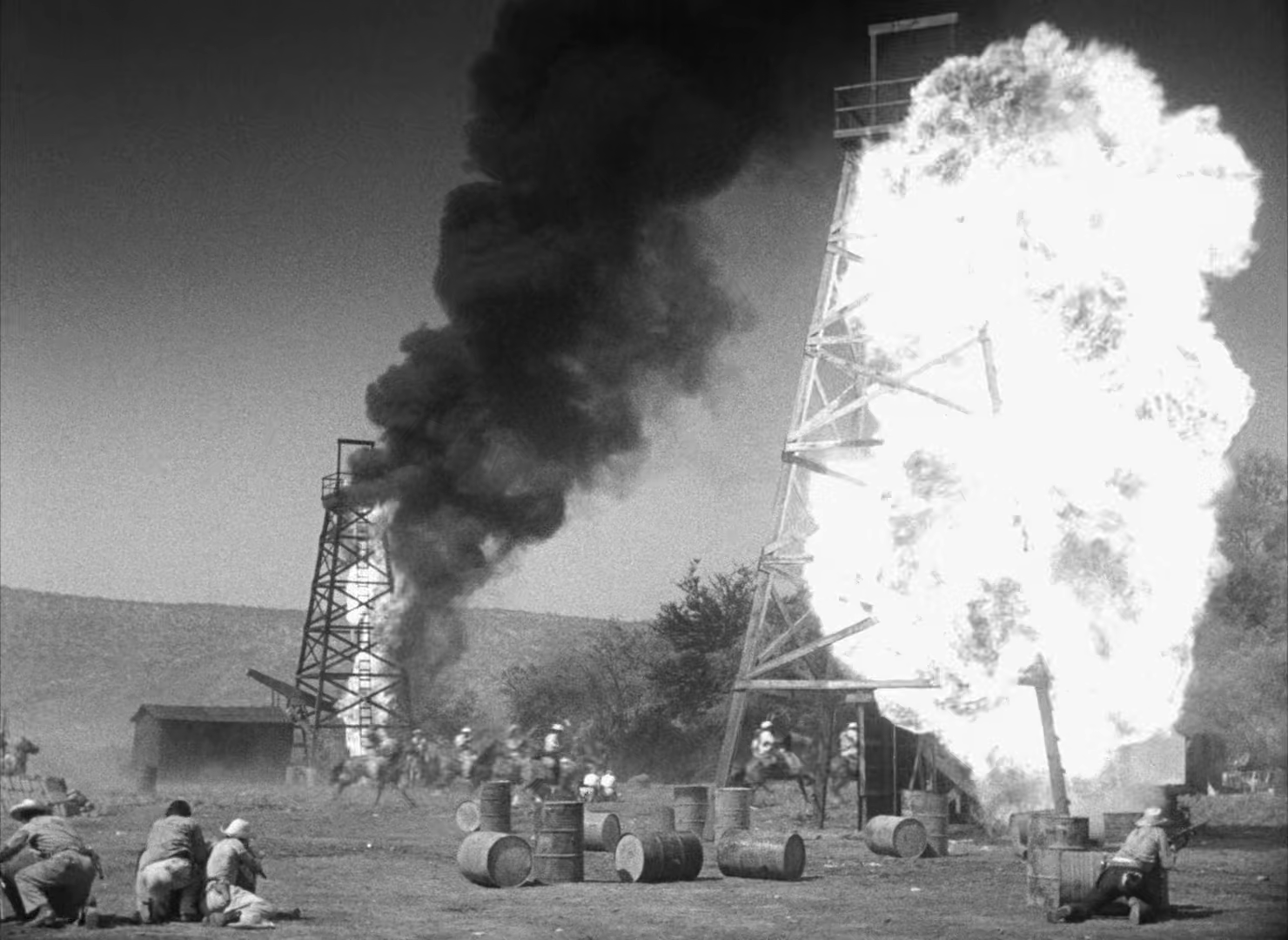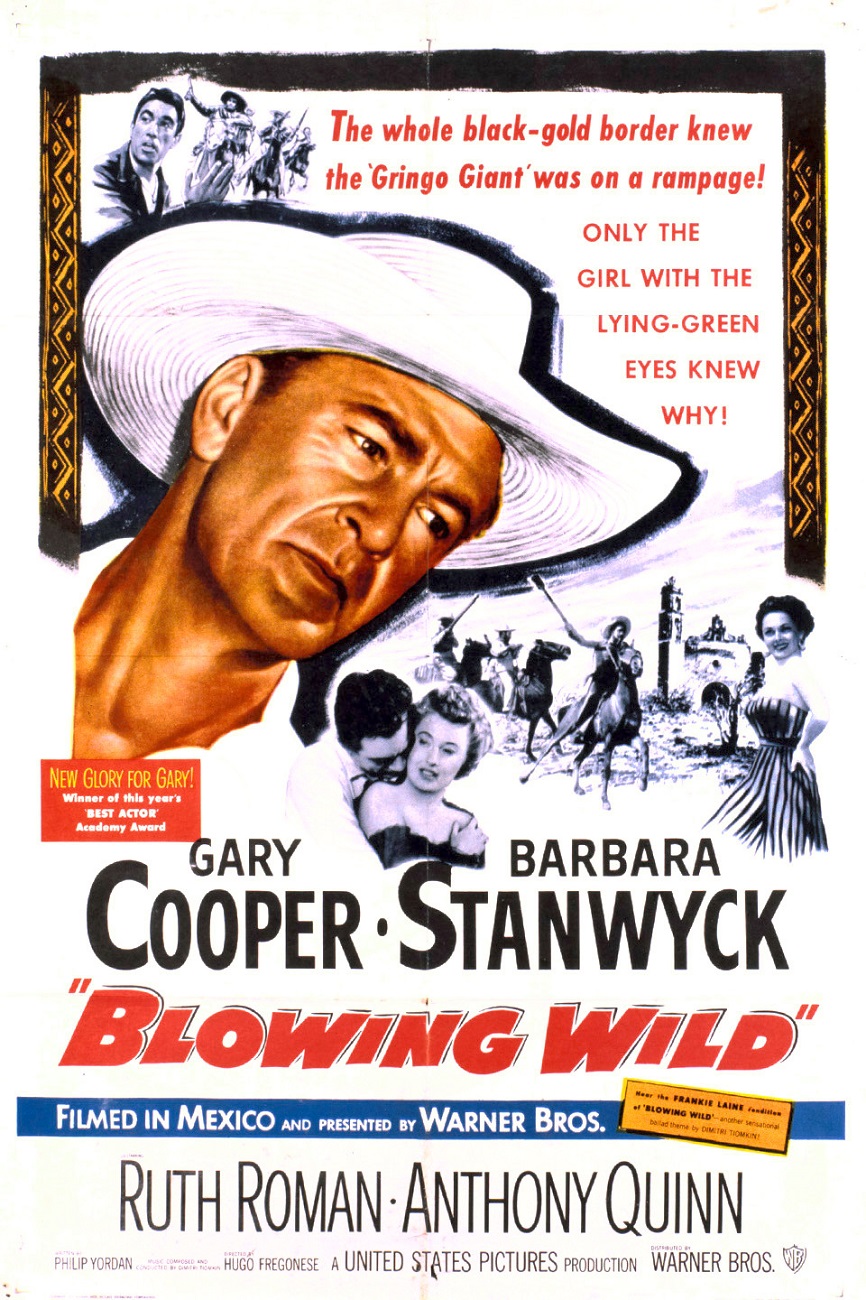[THE CHALK-OUTLINE]
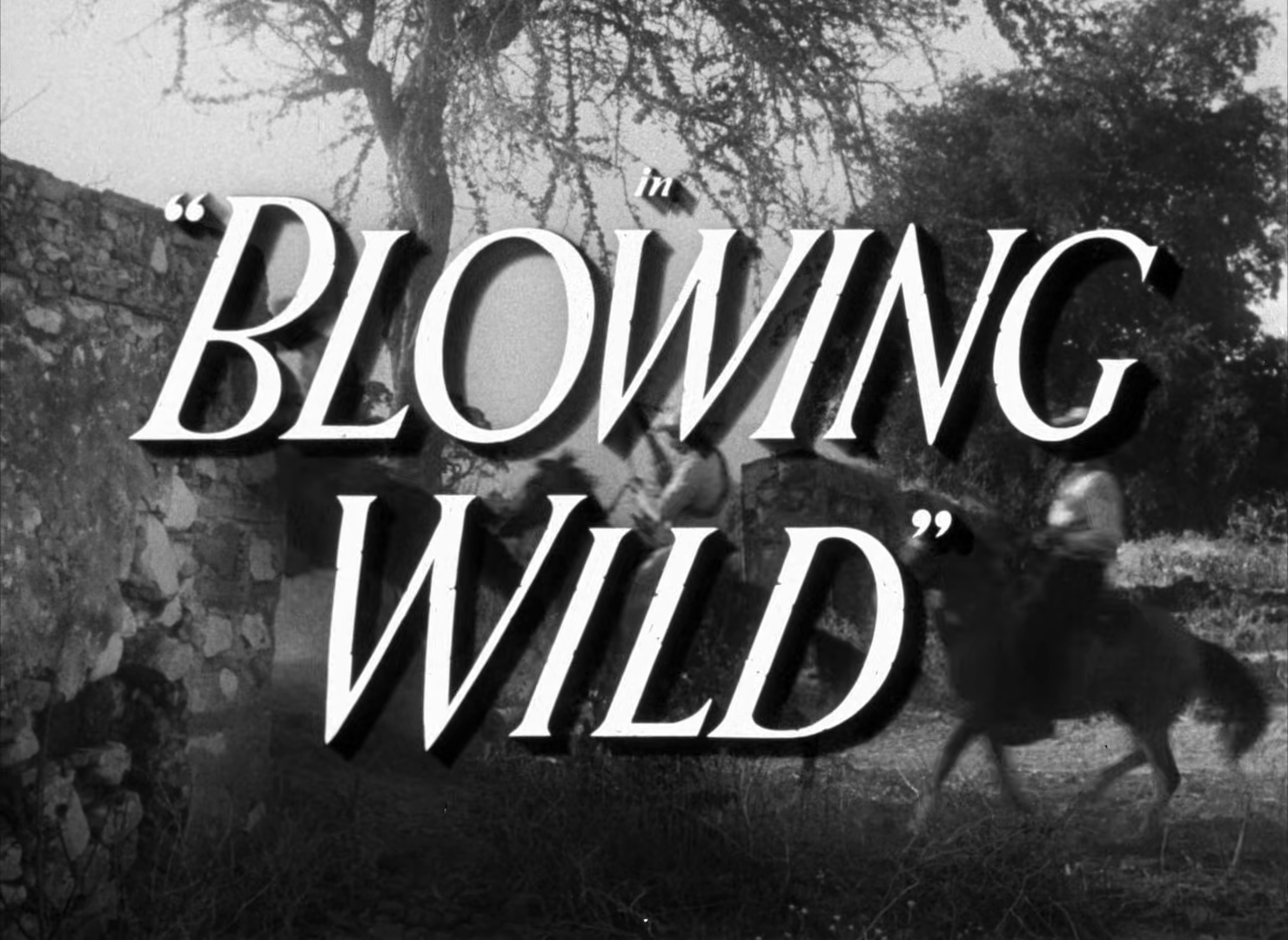
Blowing Wild (1953): Breakdown by The Hestinator (Brandon)
A group of oilmen struggle to survive in bandit-infested territory in South America.
[THE GOOD, THE BAD, AND THEIR BADASSITUDE]
THE HEROES:

Gary Cooper as Jeff Dawson
Gary Cooper was one of the original badass action heroes of cinema, and Blowing Wild is one of the action-adventure flicks made in the last decade of his life. Here, he plays a tough-as-nails wildcatter in South America named Jeff Dawson. “What the Hell is a ‘wildcatter?’” is what you’re probably wondering. That’s somebody who drills for oil in random spots hoping to see some of the thick, black stuff squirting up. Honestly, Jeff Dawson isn’t radically different from your typical Cooper character. He’s stoic, heroic, full of integrity, cool as ice, good with a gun, etc. His partner, Dutch Peterson (Ward Bond), and him are currently in a down-on-their-luck state thanks to some roving bandits blowing up their oil rig. Maybe they can get a job transporting some nitroglycerin across the countryside…
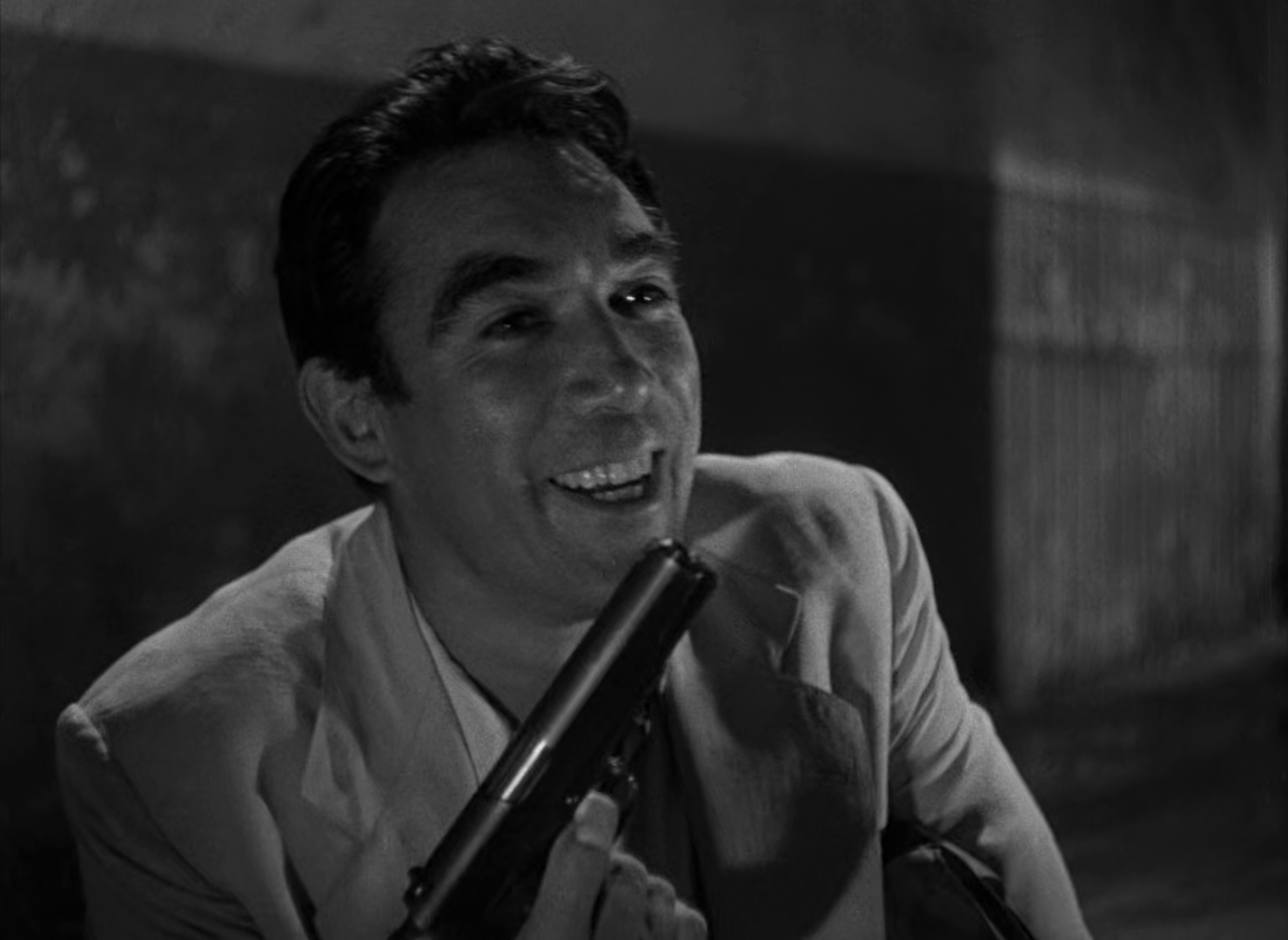
Anthony Quinn as Ward “Paco” Conway
Anthony Quinn was another relatively early tough guy actor in movie history, so seeing him team up with Coop is a real pleasure. A former/future partner of Jeff Dawson, Paco’s struck it rich since parting ways with Jeff, now owning an oil field of his own. He enjoys giving knuckle sandwiches to incompetent foremen, drunk driving, womanizing, and taking things a little too personally. I guess he could be described as an insecure hothead, but he’s still a likeable character.
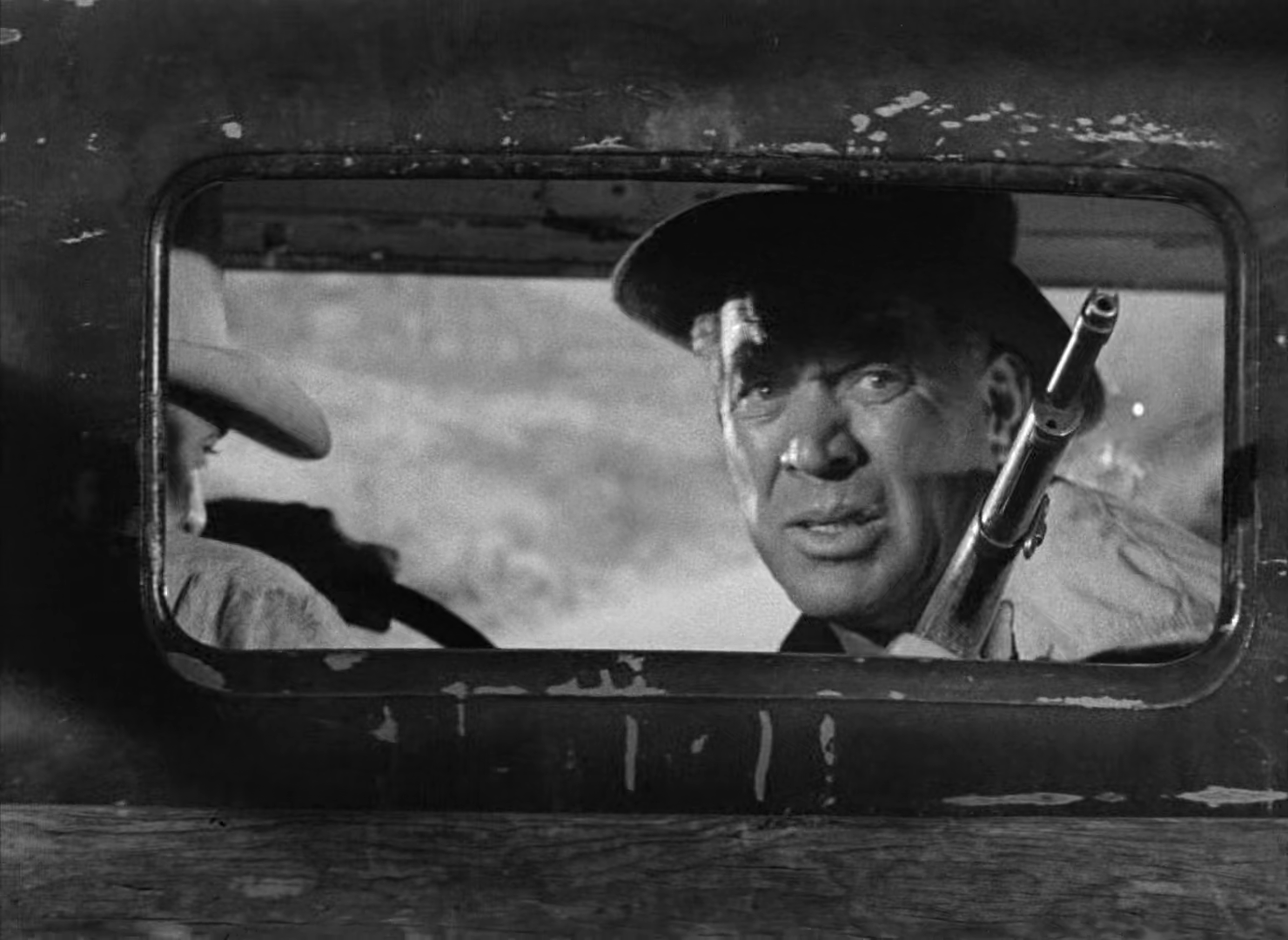
Ward Bond as Dutch Peterson
Popular character actor Ward Bond shows up as Jeff Dawson’s current wildcatting partner. While he does kill one person (he shoots a bandit off the latter’s horse during the nitroglycerin run), he also receives a bullet to the leg in the same sequence. Poor Dutch spends most of the movie in the hospital, as Jeff cheats on him with Paco Conway. Still, Ward Bond makes a very positive impression in Blowing Wild, coming close to almost nearly threatening to overshadow Coop in their scenes together.
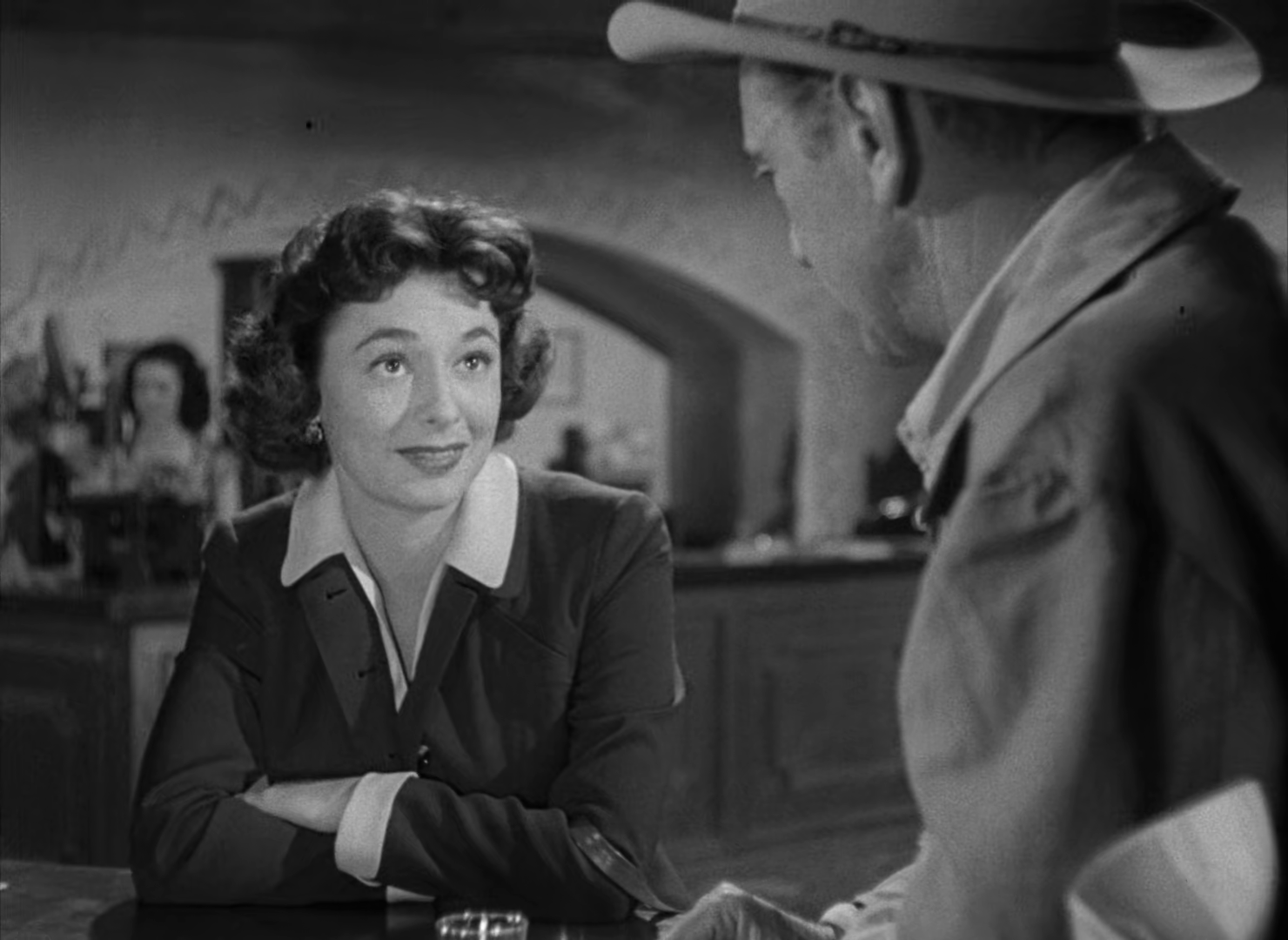
Ruth Roman as Sal Donnelly
The award for Most Pointless Role in Blowing Wild goes to Ruth Roman. She’s Gary Cooper’s love interest, a woman who wants to escape from the country the film’s set in so that she can actually stay and become a blackjack dealer in a hotel. She exists to add a little romantic flavor to Cooper’s character’s story, but I have a hard time thinking of her part as essential to the plot.
THE BAD GUYS:
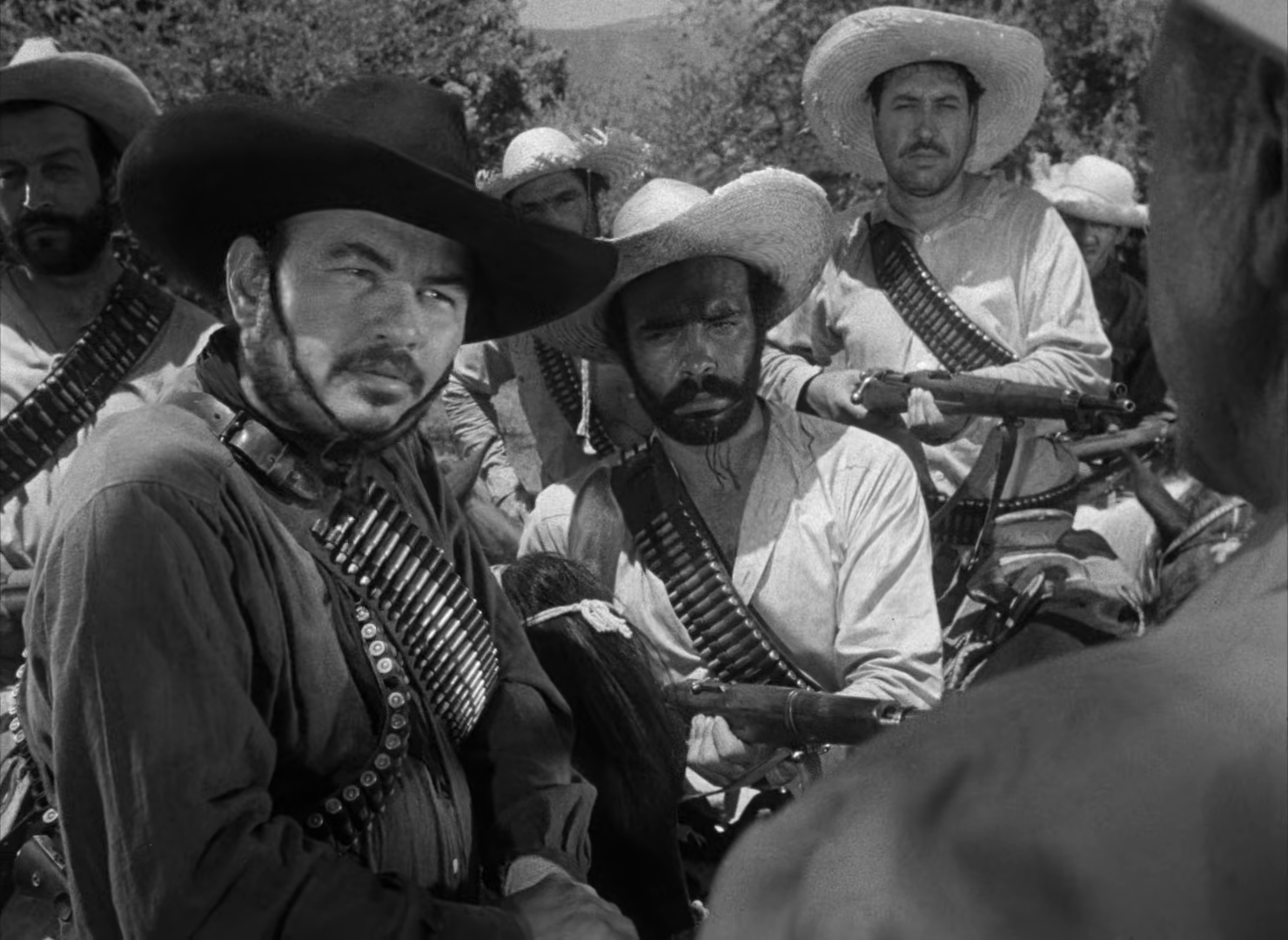
Juan García as El Gavilan
The local bandit leader is El Gavilan, a charismatic chap who flunked math class. His band of desperadoes harass the local oilmen as a way of making a paycheck. He’s really not that threatening of a bad guy, even if he can shoot a mid-air bird with a bolt-action rifle. His primary weakness is metal pipes to the head. Juan García, who plays him, would show up in another Gary Cooper picture, the action-adventure-war-western Vera Cruz (1954) as Pedro.

Barbara Stanwyck as Marina Conway
Paco Conway’s two-timing wife is Marina. She has made it a habit to sneak into the guesthouse of her ranch to blow the man staying there wild. Jeff Dawson, being the wholesome hero he is, refuses her advances, but that doesn’t mean she’s going to stop trying. She’s going to get into Cooper’s pants even if it means murder.
[THE SEX AND VIOLENCE]
DUDESWEAT AND MACHISMO:

The characters played by Gary Cooper and Ward Bond live alone in the jungle, trying to get that oil pumping all day long. That being said, this is hardly the dudesweatiest film of all time, so don’t expect too much horniness among the men.
EXPLOITATION AND MISOGYNY:
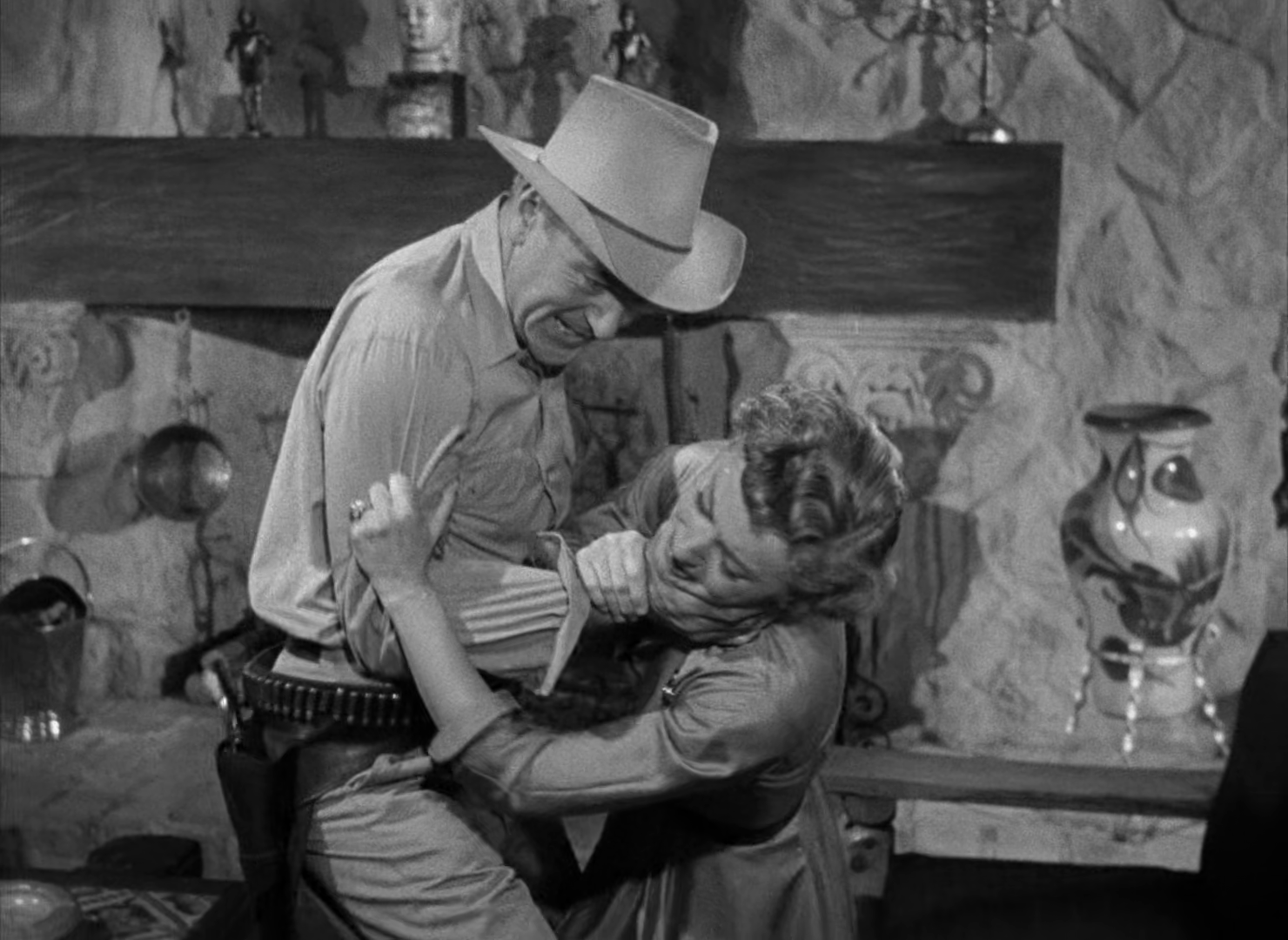
Barbara Stanwyck’s unfaithful wife is a femme fatale and one of the baddies of Blowing Wild. After Gary Cooper learns that she turned Anthony Quinn into hamburger by shoving him into a pumping old rig, he starts choking her while saying “YOU KILLED PACO! YOU KILLED HIM!” He doesn’t finish her off, but it’s an unusually unhinged moment for the Coopinator. She later gets blown up by some dynamite during the final battle.
MURDER BY NUMBERS: [ 19 ]

Most of the death comes during the final battle sequence at Quinn’s oil plantation, but a few people kick the bucket before that. As mentioned earlier, Ward Bond shoots a bandito off his horse during the nitro chase. An oil worker is shot and killed during a skirmish at one of Quinn’s oil rigs. Quinn himself gets shoved into an oil rig by Stanwyck and reduced to pulp (offscreen, of course, this is a 1953 film). During the big finale, Gary Cooper shoots four outlaws and clubs El Gavilan on the head with a metal pipe, doing him in. Other than the Cooper-induced deaths during the ending, two bandits get machine-gunned, with that gunner soon being slashed by a dude with a machete. A miscellaneous corpse is shown. Two bandits are shot off of their horses. There’s another random corpse on the battlefield during the part where three bad guys get shot by a machine gun. Stanwyck gets blown up. All in all, nineteen people die. The violence isn’t remotely graphic, though, with mild blood only showing up a couple of times.
MOST SATISFYING ASS-KICKING AND/OR DEATH:



During the final desperado raid on Quinn’s oil rigs, Gary Cooper shoots a hostile guy carrying some lit dynamite, resulting in the outlaw incinerating his own corpse by accident. A villain getting vaporized by his own explosives is a fairly shocking moment for a Production Code-era production. It’s certainly more satisfying than the demise of the head honcho (El Gavilan), when he gets wasted by Cooper after getting gently tapped on the head with a metallic pipe.
[THE BEST OF THE REST]
EPIC MOMENT:
Gary Cooper Goes into Action
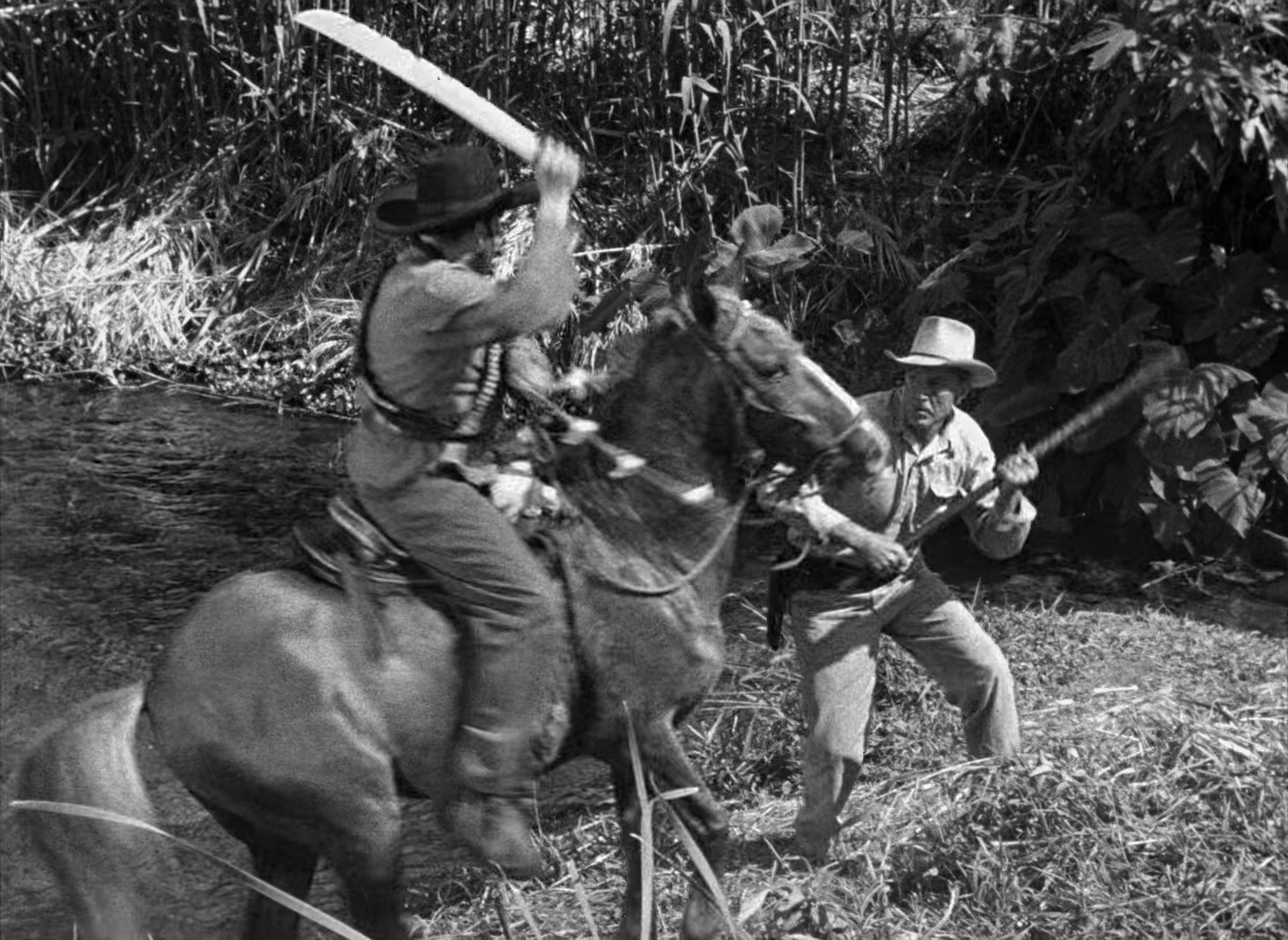
The star of the show, Cooper, doesn’t start filling any body bags until the last few minutes of the runtime. Yes, he finds himself involved a couple of action scenes prior to that. The nitroglycerin run is plenty badass and ends with Gary blowing up a bridge by tossing a container of combustible liquid into the air. However, if you want your Coop action lethal, you’re going to have to stick around for the ending. The big battle that concludes the movie is appropriately the best part. We’ve got exploding oil rigs, a guy’s carcass being blown sky-high by his own dynamite (discussed earlier), a couple of machine guns, and the machete-versus-metal-rod fight.
BEST LINE:

El Gavilan’s coming for Paco’s oil wells, and Paco and Jeff head out to the bandit lord’s lair to negotiate. The criminal mastermind offers a deal:
El Gavilan (Juan García): “You have eighteen wells. I want a thousand dollars for each well. Total: fifty thousand dollars. [chuckles] I don’t know how to add.”
Well, at least he’s honest. Needless to say, this action movie’s not going to end with our two protagonists paying off a bad guy, so brace yourself for some mayhem.
[THE EXECUTION]
Blowing Wild is not one of Gary Cooper’s more famous movies, but it is one of his better ones (at least of the ones I’ve seen so far). It can’t reach the masterful heights of High Noon (1952) or Sergeant York (1941), but this film is an excellent choice if all you’re looking for is a pulpy thrill on a lazy weekend afternoon. Take a little bit of The Treasure of the Sierra Madre (1948) and a little bit of The Wages of Fear (1953) and you’ll get something that resembles Blowing Wild.
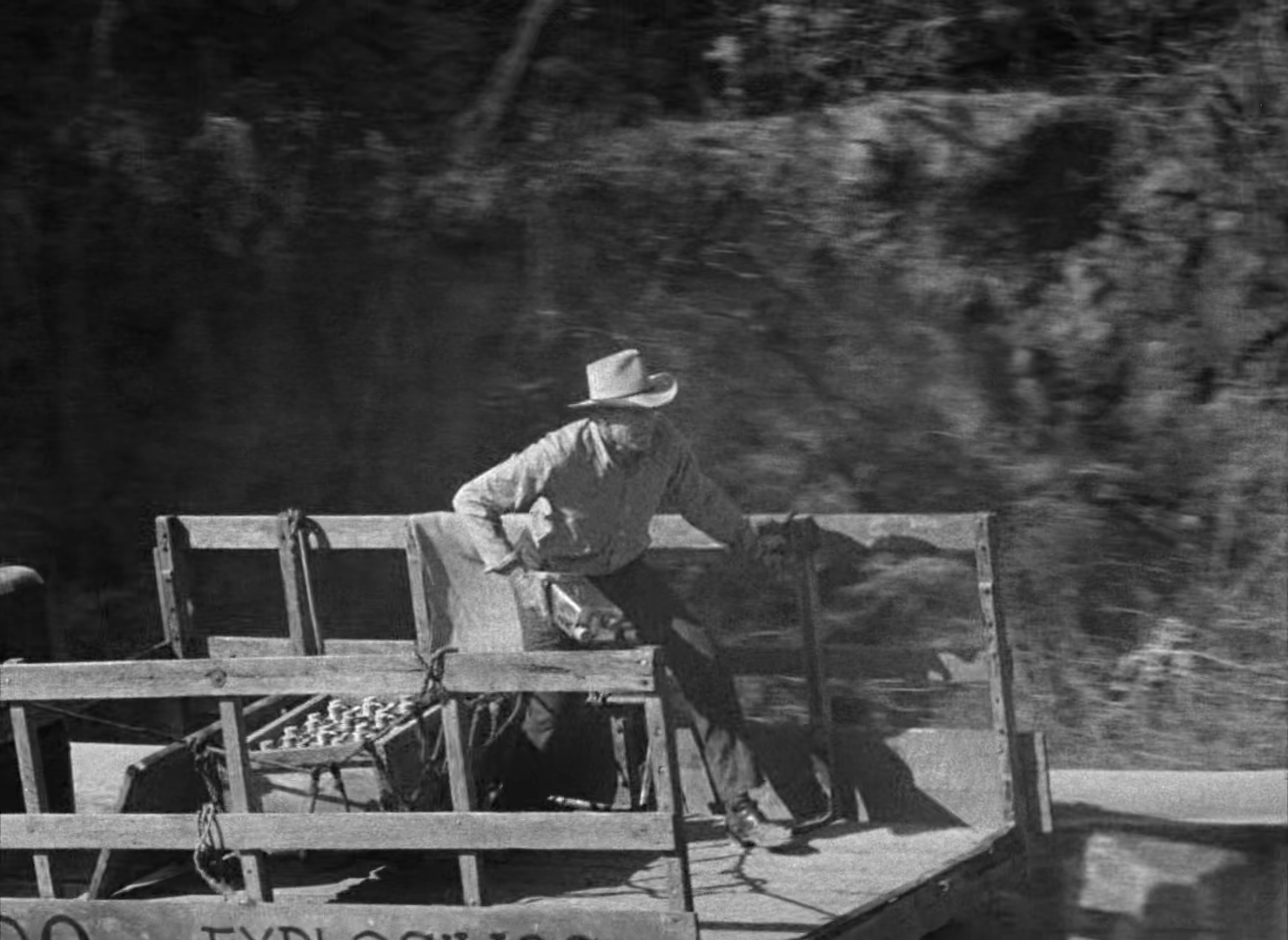
The most unintentionally funny moment of this flick is actually at the very beginning. Text shows up saying “All events, places and persons depicted in this film are fictional.” This is immediately followed up by text loudly reading “SOUTH AMERICA.” Ah, yes, the legendary, fictional continent of SOUTH AMERICA. Speaking of this, the Spanish-speaking country that Blowing Wild is set in is kept completely ambiguous. Mexico was apparently pissed with the picture, claiming it portrayed the country in a negative light. Does it? In one scene, Anthony Quinn asks where the tequila he “ordered from Mexico” was, meaning that the story probably isn’t set there. In the same scene, Gary Cooper mentions that he’s been to Guatemala and Venezuela. Nicaragua is briefly brought up in a different part. So, your guess is as good as mine as to where the plot takes place.
Is Blowing Wild a western? Now, that’s another good question. Most westerns are set in the Western United States, Mexico, or even Australia between the mid-1800s and the early-1900s. This movie appears to be set somewhere in Latin America (other than Mexico?) around the time of its release date (1953). With rugged people running around in cowboy hats shooting at bandits with revolvers in the wilderness, I’d say that it has enough western film tropes to qualify as part of that genre.
The theme song of this action-adventure treat is “Blowing Wild (The Ballad of Black Gold),” sung by Frankie Laine, which was written by Dimitri Tiomkin. It’s actually pretty good. Tiomkin also scored the motion picture, providing some serviceable music. It’s not among his best scores, but it’ll do.
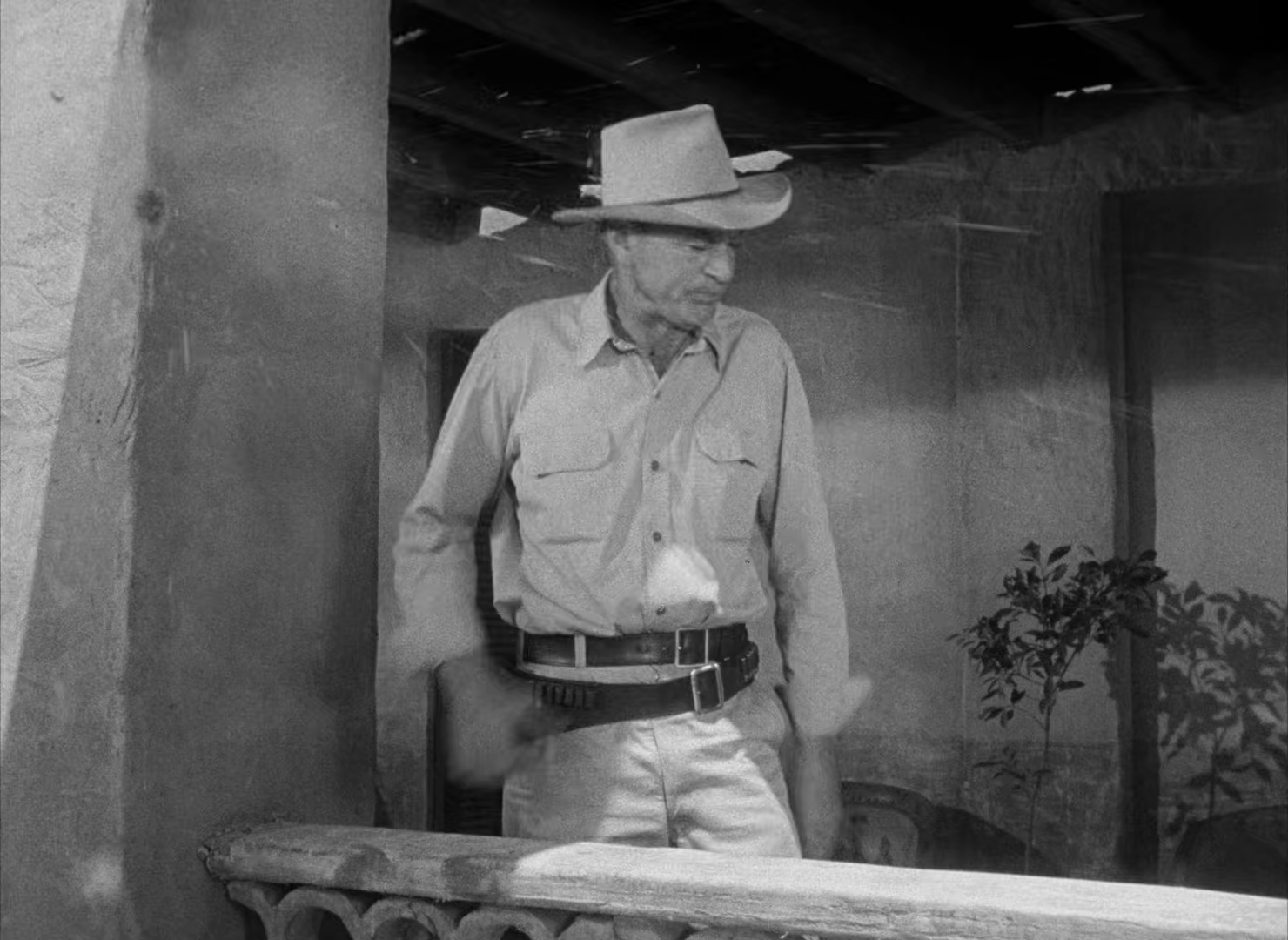
The action scenes in Blowing Wild aren’t mind-blowing, but I like them. The primary moments of physicality are the nitroglycerin run, a race between a car and a horse, a shootout at one of the oil rigs, and, of course, the big battle at the end. There are a few punches thrown and bullets fired here and there between set-pieces to keep the audience’s attention. The action and suspense sequences are what keep the movie ticking.
The love quadrilateral is probably one of the weaker aspects of Blowing Wild. Anthony Quinn wants to keep his wife, Barbara Stanwyck, but she wants to knock boots with Gary Cooper, who has an eye on Ruth Roman. It definitely doesn’t ruin the flick, but does anybody actually care about most of the goings-on related to it? Let’s get back to the action!
The review for this film on blu-ray.com says that Blowing Wild might be suffering from “an identity crisis.” Yes, this work’s influences appear to come from everywhere: we’ve got film noir, westerns, The Wages of Fear, oil-drilling sagas, action-adventure tales, and probably more thrown into the pot here. Still, if this production has “an identity crisis,” it certainly doesn’t get in the way of its quality, which I’d rate eight-outta-ten.
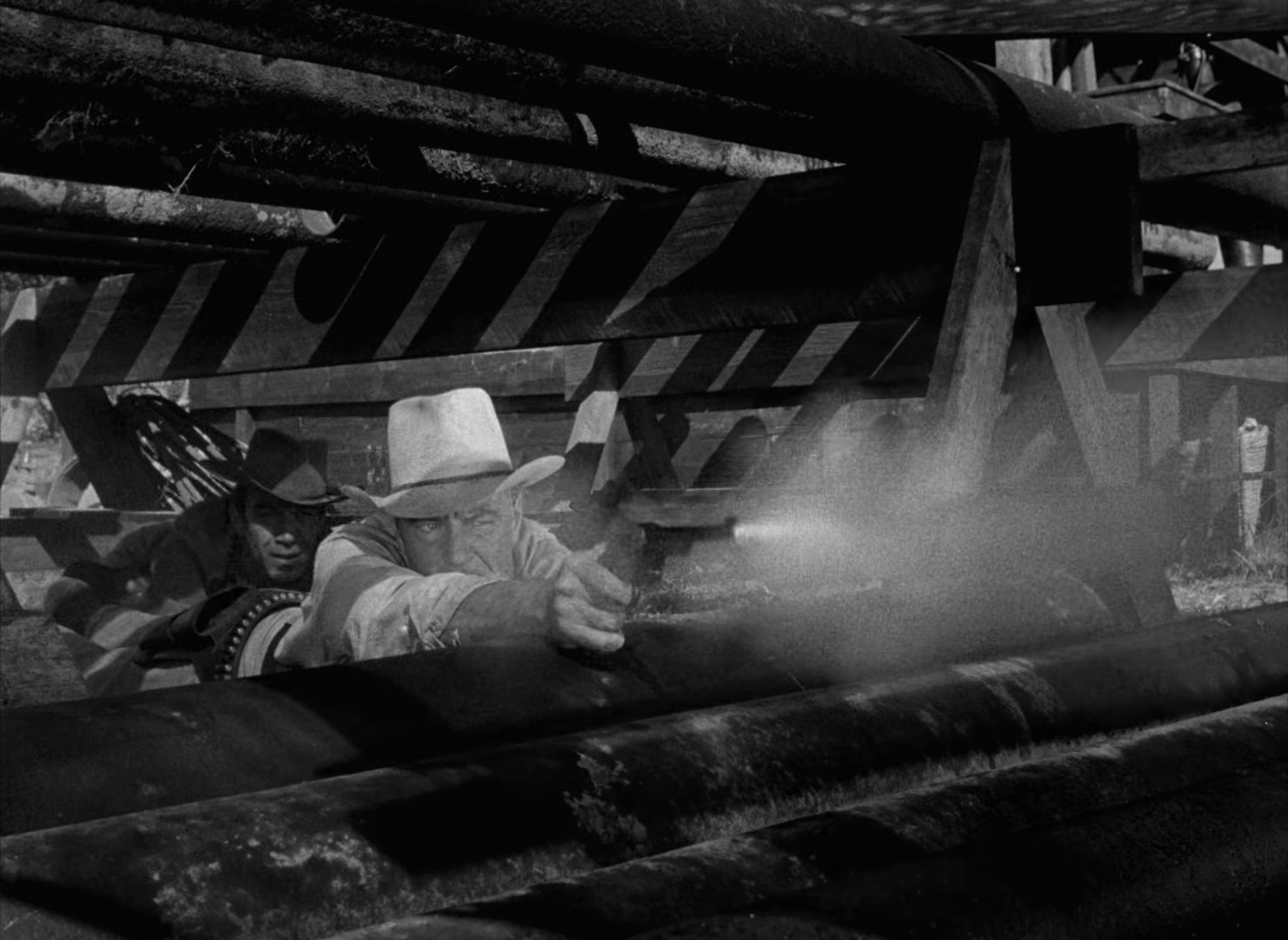
This really is a hidden gem that more fans of Badass Cinema should see. Some parts are derivative of more famous movies, but I think that the premise of Gary Cooper, Anthony Quinn, and Ward Bond playing desperate oilmen in Latin America is exciting enough to sustain the film through its ninety-minute runtime. As far as Coop flicks go, it’s not on the same level as, say, High Noon or Sergeant York, which I brought up earlier, but it’s still a very fun distraction. It certainly doesn’t deserve to be forgotten, like it currently is. I heartily recommend it.
[THE MORAL OF THE STORY]
18 x 1,000 = 50,000
[THE AOBG ACTION CHECKLIST]
[ ] Athlete(s) Turned “Actor”
[X] Clinging To The Outside Of A Moving Vehicle
[ ] Crotch Attack
[ ] Dialogue Telling Us How Bad-Ass The Main Character(s) Is/Are
[ ] Ending Featuring An Ambulance, A Blanket, Or A Towel
[ ] Factory/Warehouse/Castle
[X] Giant Explosions
[ ] Heavy Artillery
[X] Improvised Weapon(s)
[X] Macho Mode(s) Of Transportation
[ ] Main Character Sports Facial Accessory(s)
[X] Manly Embrace(s)
[ ] Notorious Stunt-Man Sighting
[ ] Passage(s) Of Time Via Montage
[ ] Politically Fueled Plot Point(s)
[X] Senseless Destruction Of Property
[X] Shoot-Out(s) and/or Sword Fight(s)
[ ] Slow-Motion Finishing Move(s)/Death(s)
[X] Stupid Authoritative Figures
[ ] Substance Usage and/or Abuse
[ ] Torture Sequence(s)
[ ] Unnecessary Sequel
[X] Vehicle Chase(s)
[ ] Vigilante Justice
[TOTAL: 9 outta 25]
